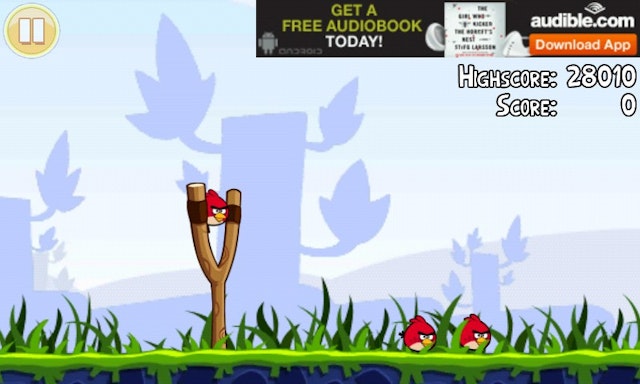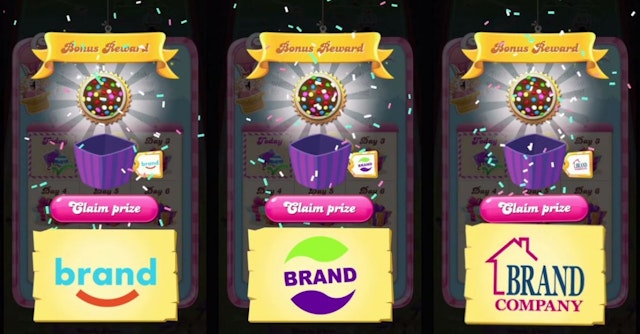Your in-game advertising cheat codes: everything marketers need to know to play
Marketers are preparing for an explosion of in-game ads, which is set to open up hundreds of new ways to talk to audiences and even lay the foundations for the ‘metaverse’. But while media agencies are still working the sector out, all are in agreement that it is a long-term play. As part of The Drum’s Gaming Advertising Deep Dive, we outline the many ways brands can compete.

Gaming is huge and, with few exceptions, everyone with an electronic device is doing it
There are now around 3 billion gamers in the world. They are highly fragmented across millions of games that scratch every need on almost any device imaginable.
From the irreverent Goat Simulator to the comically-violent Doom to the educational This War of Mine to the highly addictive Candy Crush (or, god forbid, Wordle), there’s a title fit for everyone and new releases every day.
It’s huge and, with few exceptions, everyone with an electronic device is doing it. Which poses the question, why are conversations about gaming so narrow?
Advertisers go where the attention is and so 93% of media buyers are planning to buy some in-game ads by 2025. Many in the space unfortunately use ‘gamer’ as a proxy for youngish tech-savvy consumers (probably male). They still imagine a spotty, basement teen stereotype from the 1980s. But even that cliched gamer is now in his 50s, perhaps with grandchildren to whom he has spread the gaming bug.
Just as marketers would never equate History Channel viewers with those who tune into the Cartoon Network because they are all ‘TV viewers’, it is a massive mistake to make think of all gamers as one. Farming Simulator 22 fans are likely far removed from Fortnite players. Thankfully, publishers and their respective ad networks are getting better at proving this.
So, how can brands activate in gaming?
Before we start this journey, it is worth remembering there remains resistance to ads in PC and console (Xbox, PlayStation, Nintendo) platforms where players pay a premium fee for a premium experience. It is unwise to compare these platforms to the booming mobile gaming sector born in the 2010s with a free-to-play or freemium model. Those games scratch a different itch, with a low barrier to entry, and wouldn’t have existed without in-game ads.
On the longer established platforms, meanwhile, norms have been set. Furthermore, across PC, console and mobile, each software operator has its own advertising rules. Consoles have hard rules protecting the identity of their users with regards to targeted advertising, and Apple’s ATT has hurt app revenues for similar reasons.
With that in mind, marketers must start by identifying what audience they want to talk to (or with) before learning where best to find them. Platforms have their quirks.
Generally, some assumptions can be made (that Apple users are more likely to be into luxury purchases than Android users, for instance, or that someone with a high-end gaming PC likely has more disposable gaming income than someone playing a freemium mobile game). Audience demographics can be further understood on a title-by-title basis and, where possible, with third/first-party data overlaid.
So, how do we reach them?
Gaming display advertising: In mobile, gaming was scaled up at pace in the 2010s. This sector boomed because it was a new device that virtually everyone had, accounting for new windows of free time that didn’t previously exist.
Games were designed to serve advertising, often in a free-to-play model. Players could download for free and play in exchange for viewing programmatically bought display ads. Often these are served in the menus. They would also sometimes interrupt the experience in breaks.
Players were sometimes frustrated by these pop-ups and much of the innovation in the space is looking to better integrate the ads into the experience. Many were initially static then later became video as bandwidth advanced. For better or worse, these are similar to the display ads served across the open web on any publisher’s pages.

Rewarded ads: The onslaught of advertising in these titles often wasted game immersion. Developers optimized the volume of ads they could show players before frustrating them to try a new title. But innovation disincentivized bad practices. Rewarded ads became popular, bribing players with lives and items in return for watching ads and engaging with brands. Players likely have better responses to the creative that aids their game progress, especially when these interactions are optional (as Activision explains here).

Advergaming: Why not just build a game for your brand? An approach as old as gaming itself, in the pixel era Coca-Cola and McDonald’s were just two of the many brands growing affinity with younger audiences this way. Sometimes the games were packaged for free with product, sometimes they were sold at full price. In the mobile gaming age, these titles are easy to create. It remains difficult to scale a player base and that may distract from the marketing objectives… (Which leads us to…)
Branded Experiences: Almost every day a brand releases a custom branded level in a game. These are often dressed up by agencies as launching an ‘experience’ in the ‘metaverse’. Brands are using this current buzz as an on-ramp into gaming, often without calling a spade a spade.
It’s like advergaming but is building the level into open-source titles with proven player bases, like Roblox, Minecraft and Fortnite, rather than trying to scale up a new title. Some games enable custom creation of these experiences, others require official partnerships to bake them into the release. There is another element: these experiences can be shoppable, like Nike’s set-up in Roblox.

In-game advertising
It is now clear that product placement is the way to go. Gamers will accept ads if they are not intrusive, but is there the scale to make all this worthwhile?
EA says it reaches more than half a billion players across its many games. Epic’s Fortnite, meanwhile, is a standout location for smart branded activations, with around 80 million active monthly users. Roblox is also building up steam.
Most games are now internet-connected and feed user data back to developers, with this information helping advertisers better understand the effectiveness of their campaigns. They used to have to guestimate product placement reach through game sales, now they have a good idea of exactly how many people see their ads in 3D worlds.
Arguably, the largest titles in gaming remain small in comparison to the open web or the likes of Facebook or Google’s ecosystems. Samuel Huber of in-play ad platform Admix called gaming a “Sleeping Facebook” (that is, if someone can join the dots between these disparate siloes into a single network).
But maybe it is more about time on platform with a select audience, regardless of scale. We know that people spend a lot of time in digital worlds, most of which are ad-free, and exciting adtech startups are building the foundations to monetize these worlds. And it goes to the top, with even Microsoft courting advertising types. As is Sony. To what extent they embrace the industry remains uncertain.
The foundation ad format for 3D worlds is virtual out-of-home (VOOH) inventory. If you’re unaware of the lingo, ’out-of-home’ or ’outdoor’ advertising is the name given to physical apparatus on city streets that can host ads, such as billboards, bus stops, phone boxes.
For realism, games coincidentally have all this inventory just sitting waiting to be utilized. Rather than studios having to make up fairly realistic ads, they can just place real ones in there. Ad sales network are plugging this inventory into their systems so brands can extend their out-of-home ads into gaming with minimal changes to the creative. Even NBCU is selling the stuff.
Clare Chapman, who is now chief exe of Carat UK, said last year that it was the year gaming really leveled up. Her focus was ensuring that media agencies knew what they were doing in this fairly uncharted space.
With in-game billboards, buyers are afforded the targeting of the open web in the frames known in outdoor advertising. While billboards are a one-to-many medium (broadcast), their virtual in-game peers only target the gamer (unless the gamer so happens to be an esports professional or streamer broadcasting the game footage, in which case we’ve got a billboard that is again broadcasting to many).
With this in mind, there’s a lot for buyers to consider. This technology remains young and in-game billboards are the very first step. Brands could technically buy up anything in a game.
For example, in mobile gaming, companies are selling the branding rights of vital in-game items and ‘power-ups’. This isn’t a new idea, with Energizer powering life-saving torches in Alan Wake as far back as 2010. Major household brands can bid to sweep up the rights to these wide-reaching items.
In 3D worlds like Grand Theft Auto (although violence is likely to be a brand safety issue), all the apparatus, items and locations could be biddable.
But there have been some slip-ups. Street Fighter 5 tried (and failed) to sell ad space on player character skins. This could be more of a goer in sports titles, where sponsorship is part of the gaming experience and players could be rewarded (in-game) for interacting with these brands. Fifa 18 broke ground by integrating real sponsorships into the gaming world, while its virtual avatar Alex Hunter even spilled into its real-world TV ads.
And with that logic, in-game shops could be actual shops... like John Lewis did in a custom Fortnite level with the help of ITV.
Streaming media
Marketers don’t have to advertise in games to reach gamers. They can run ads on and around gaming content, such as partnering with a streaming firms like Twitch and bringing in relevant content producers. Twitch even built Corsodyl a game for use in the app. Facebook Gaming and YouTube are also in this space.
Many gamers watch gaming content and right now it is often easier to reach them around this content than in some of the burgeoning new mediums.
Esports
Esports is a different beast, meeting at the very busy crossroads of sport, streaming, gaming and influencing. Many of these channels are used, but with a slightly different flavor. So first, a guide on how to get started in esports advertising.
As commercial entities, esports teams are building drastically different models to attract partners. Many are positioning as entertainment brands, with engaging content outside of the window of competition.
It’s more than a sponsorship – esports teams believe they can engage gaming audiences better than anyone, and that includes creating branded content. Opportunities include sponsorship of players, teams and events. Naming rights, jersey placement, broadcast overlays, display advertising on digital assets, branded video and an element of influencer marketing can all be baked into these deals.
The space is still maturing but it’s clear that marketers shouldn’t be entering ‘esports’ alone without a gaming presence.
Beyond gaming
From a creative perspective, it is inarguable that some of gaming’s greatest ads landed last year, be it Balenciaga’s 3D Fortnite billboards or Fifa’s Kiyan Prince resurrection.
Gaming IP is some of the most loved in the world and top marketers are seeing the benefits of bringing these characters in the real world. These play out like celeb endorsements and open the mind to the impact gaming can have outside of gaming, as much as the impact brands can have in gaming.
Rather than bringing the ads into games, maybe it is time to bring the games into ads...
-
How the marketing industry is repositioning to buy gaming media
-
Accenture Song on why virtual product placement will be easier in games than on Netflix
For more on all the different ways brands can advertise in gaming, from virtual billboards to product placements, social lenses and even games of their own, check out The Drum’s Gaming Advertising Deep Dive.

